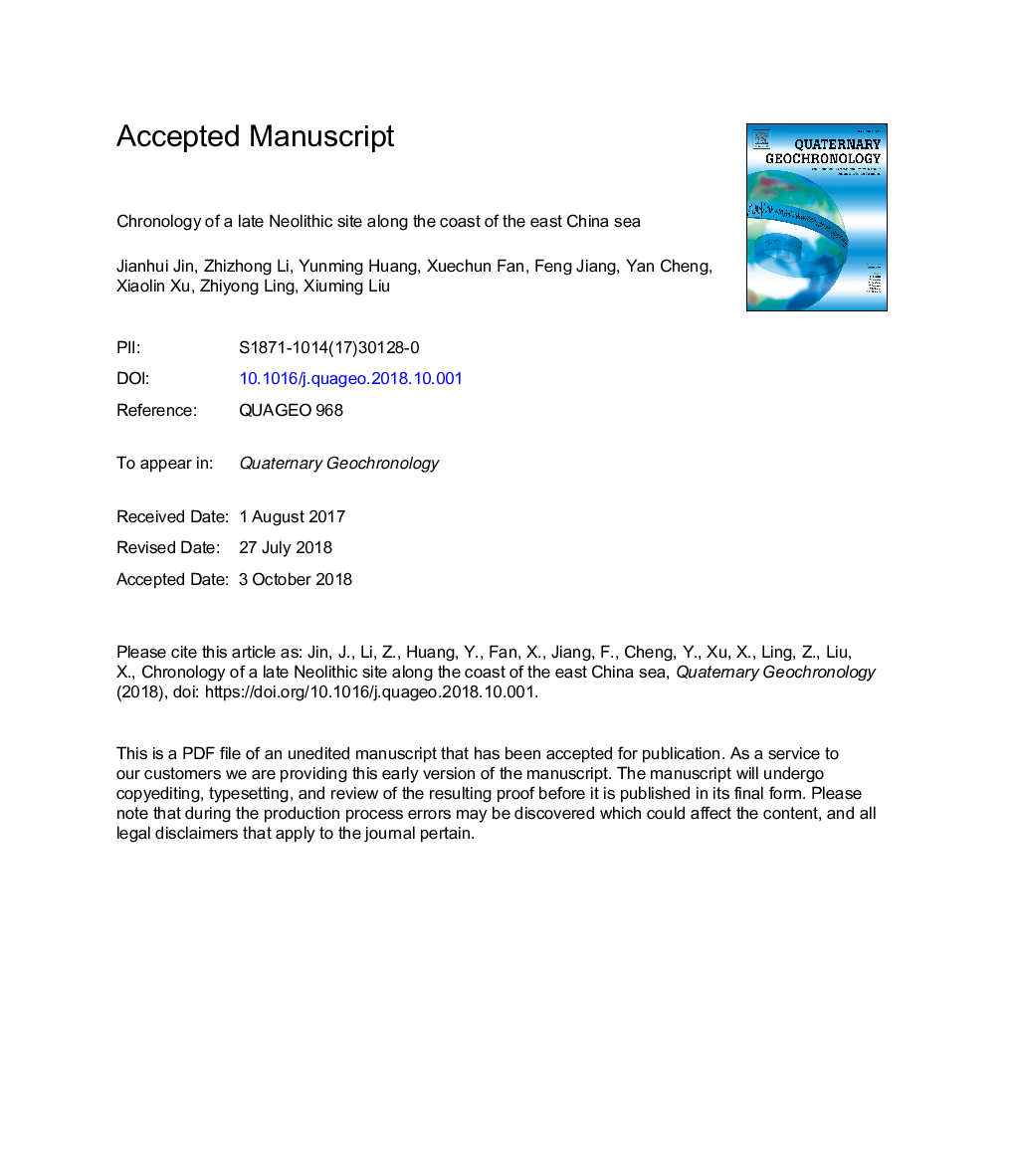| Article ID | Journal | Published Year | Pages | File Type |
|---|---|---|---|---|
| 11033075 | Quaternary Geochronology | 2018 | 17 Pages |
Abstract
Shell mounds are the foremost type of Neolithic sites found in coastal areas of South China. These sites can provide significant information on prehistoric human activity and climate change; however, only a few shell mounds have a systematic chronology in South China. In this study, optically stimulated luminescence (OSL) and 14C dating techniques were employed to establish a systemic chronological framework for a Neolithic shell mound found at Pingfengshan in the coastal area of Fujian Province, southern China. In addition, the possible reasons for human coastal migrations that took place during this specific period, along with their associations with climate change, are discussed. The results showed that the obtained OSL ages were reliable and consistent with the 14C chronology. The age of the Pingfengshan site was found to be approximately 4.0-3.3 ka. Additionally, it was found that post-depositional anthropogenic disturbances can have various influences on the resultant OSL and 14C ages. Cross-validation between different dating methods proved to be of great importance to adequately determine the chronology in archaeological sites. The study revealed that climatic changes played a crucial role in prehistoric human migration during the Huangguashan cultural period (4.3-3.2 ka). Sea level fluctuation may have affected onshore living space and site selection of prehistoric settlements, and intensive winter monsoons may have caused the recession of the Huangguashan culture.
Related Topics
Physical Sciences and Engineering
Earth and Planetary Sciences
Geochemistry and Petrology
Authors
Jianhui Jin, Zhizhong Li, Yunming Huang, Xuechun Fan, Feng Jiang, Yan Cheng, Xiaolin Xu, Zhiyong Ling, Xiuming Liu,
